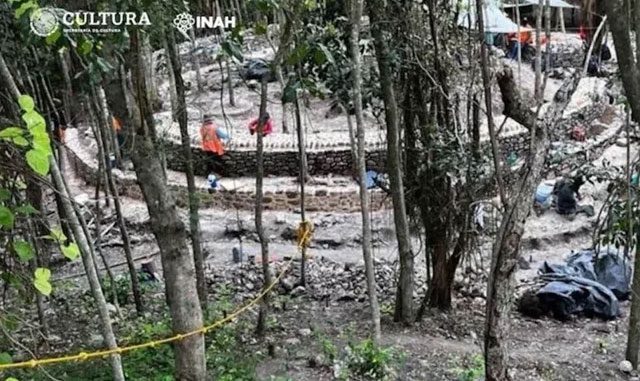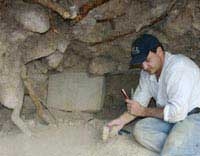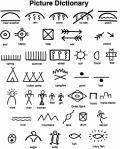Archaeologists in Mexico have uncovered a 1,000-year-old Maya temple in El Tigre, an archaeological site on the Yucatan Peninsula.
Dating from 1000 to 1200 AD, the ancient temple was discovered as a circular structure with two levels, topped with what appears to be a flat roof.
Archaeologists believe the temple likely worshipped the serpent god Kukulcan, one of the four most powerful deities in ancient Maya religion, according to Newsweek.

Circular ancient structure at the El Tigre archaeological site.
Mexican authorities even suspect that this may be the temple described in the writings of Don Pablo Paxbolon, who led the Maya people to settle in what is now the state of Tabasco from 1575 to 1576.
Paxbolon mentioned four such temples in the area, with each temple dedicated to one of the four main gods of the Maya.
While the temples mentioned in Paxbolon’s writings have yet to be found, similar circular structures have also been excavated on the Yucatan Peninsula, including at Edzna, Becan, Uxmal, and Chichen Itza.
“The temple architecture has expanded our knowledge of El Tigre,” said anthropologist Diego Prieto Hernández, Director General of the National Institute of Anthropology and History of Mexico.
Hernández noted that circular structures are often associated with the early phase of the “Postclassic period,” from 1000 to 1200 AD. During this time, the Maya civilization had connections with other regions of ancient Mesoamerica, particularly with central Mexico, Oaxaca, and the Gulf Coast.
The Yucatan Peninsula was one of the last settlements of the Maya before the civilization collapsed. To this day, the reasons behind the collapse of the Maya civilization remain a controversial topic among experts.
The new discovery of the legendary temple occurs as Mexico launches a railway project known as the “Maya Train”, which will span 1,600 kilometers.
The Maya Train is expected to be inaugurated in December.





















































